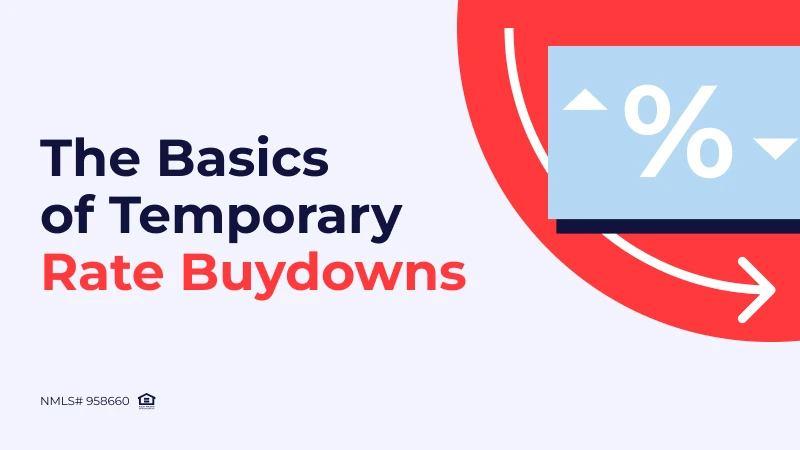Click here to print this page or back to page.
Click here to print this page or back to page.

Temporary rate buydown is a popular option for mortgage brokers looking to reduce their clients’ interest rates. By offering a reduced interest rate for the initial years of the mortgage term, borrowers can ease into their payments, enjoy reduced costs upfront, and use the savings for other expenses. In this blog post, we will cover the basics of temporary rate buydowns. You’ll learn different types of temporary rate buydowns available at A&D Mortgage and their advantages and disadvantages.
This article was originally published on December 22, 2022.
A temporary rate buydown is an arrangement between a borrower and a seller (or another party) that allows for a lower interest rate for the first few years of the mortgage. The purpose is to provide the borrower with lower monthly payments during the early years of homeownership, often when expenses are highest. The reduction can last for one to three years, with the interest rate gradually increasing to the originally agreed-upon rate after the buydown period ends.
Earn and redeem points for valuable benefits for you and your clients
Unlock RewardsDuring the buydown term, the interest rate is subsidized by funds placed in an escrow account, paid by the seller, lender, or a third party. These funds supplement the mortgage payments, temporarily reducing the borrower’s monthly burden.
Temporary rate buydowns come in various forms. Here are the two primary options offered by A&D Mortgage:
Both buydowns help borrowers ease into their mortgage payments by lowering costs in the initial years.
Temporary rate buydowns are funded at closing, where the seller, builder, or mortgage lender deposits a lump sum into an escrow account to cover the interest reduction. For the agreed-upon period (one to three years), these funds supplement the borrower’s payments, ensuring that the lender still receives the full interest payment.
At the end of the buydown period, the borrower resumes making payments at the original, higher interest rate.
A&D Mortgage offers two types of temporary rate buydowns as part of their Non-QM products, designed to meet needs of borrowers.
Unlike some lenders, A&D Mortgage’s temporary buydowns offer flexibility without requiring interest-only loans. Thanks to that, borrowers enjoy the benefits without restrictions like manufactured home exclusions.
Temporary rate buydowns is a solution for borrowers looking to manage their finances effectively during the early years of their mortgage. By offering reduced interest rates for a set period, mortgage brokers can help clients ease into homeownership. However, you should be careful with the decision to pursue a buydown. You should give consideration to both short-term advantages and long-term financial readiness.
If you’re a mortgage broker looking to expand your options for clients, consider becoming a partner with A&D Mortgage. See how temporary buydown programs can help your clients achieve their homeownership goals with flexibility and financial ease.